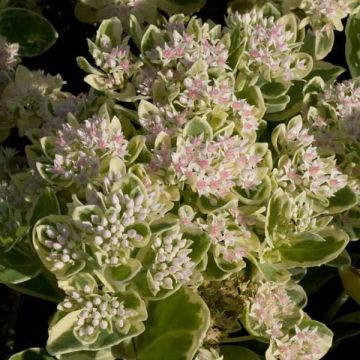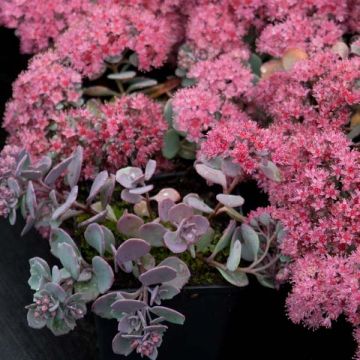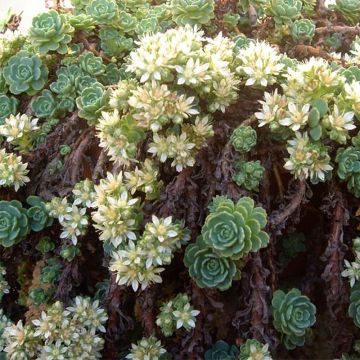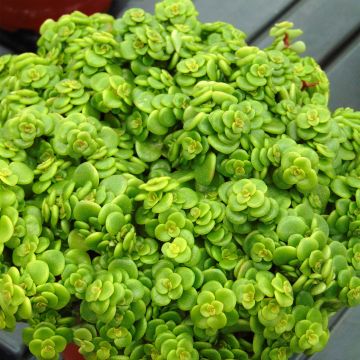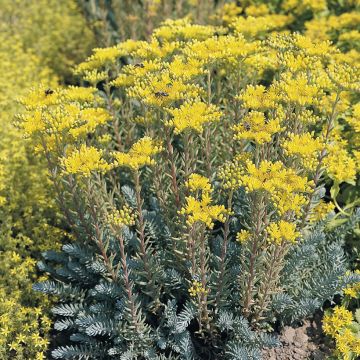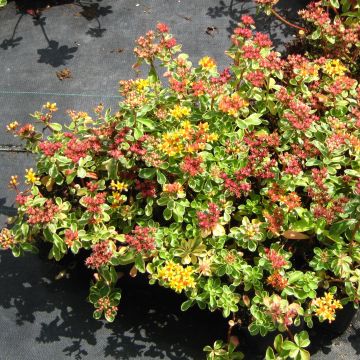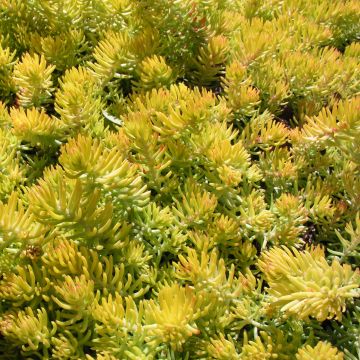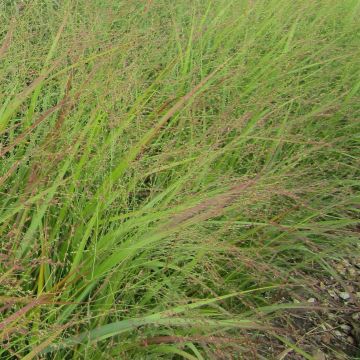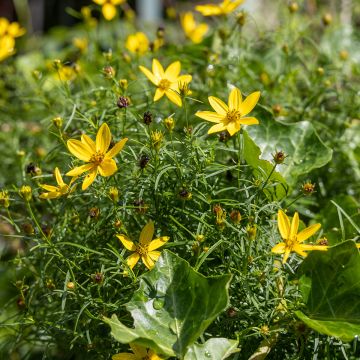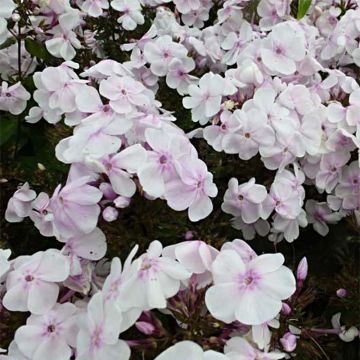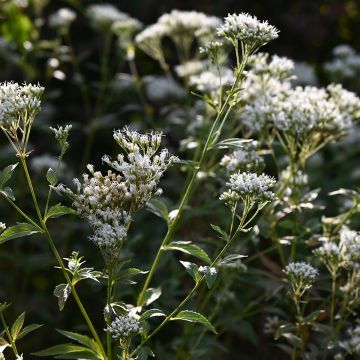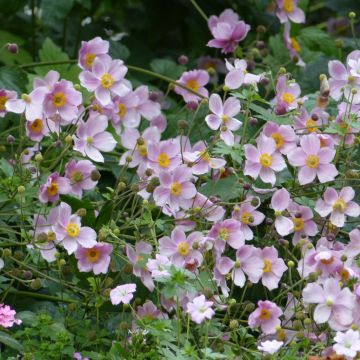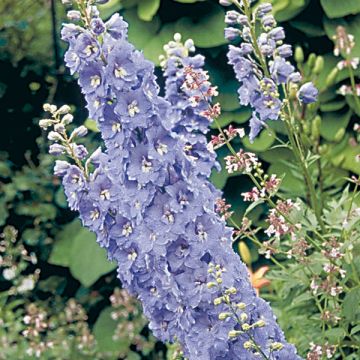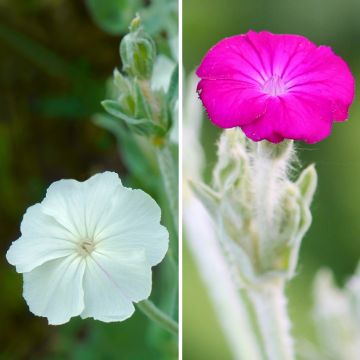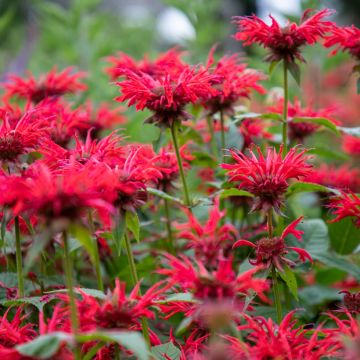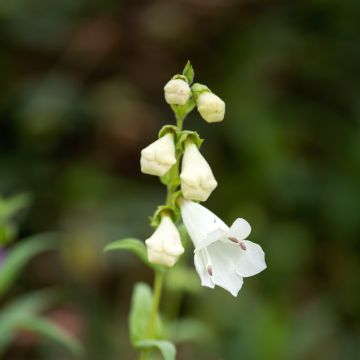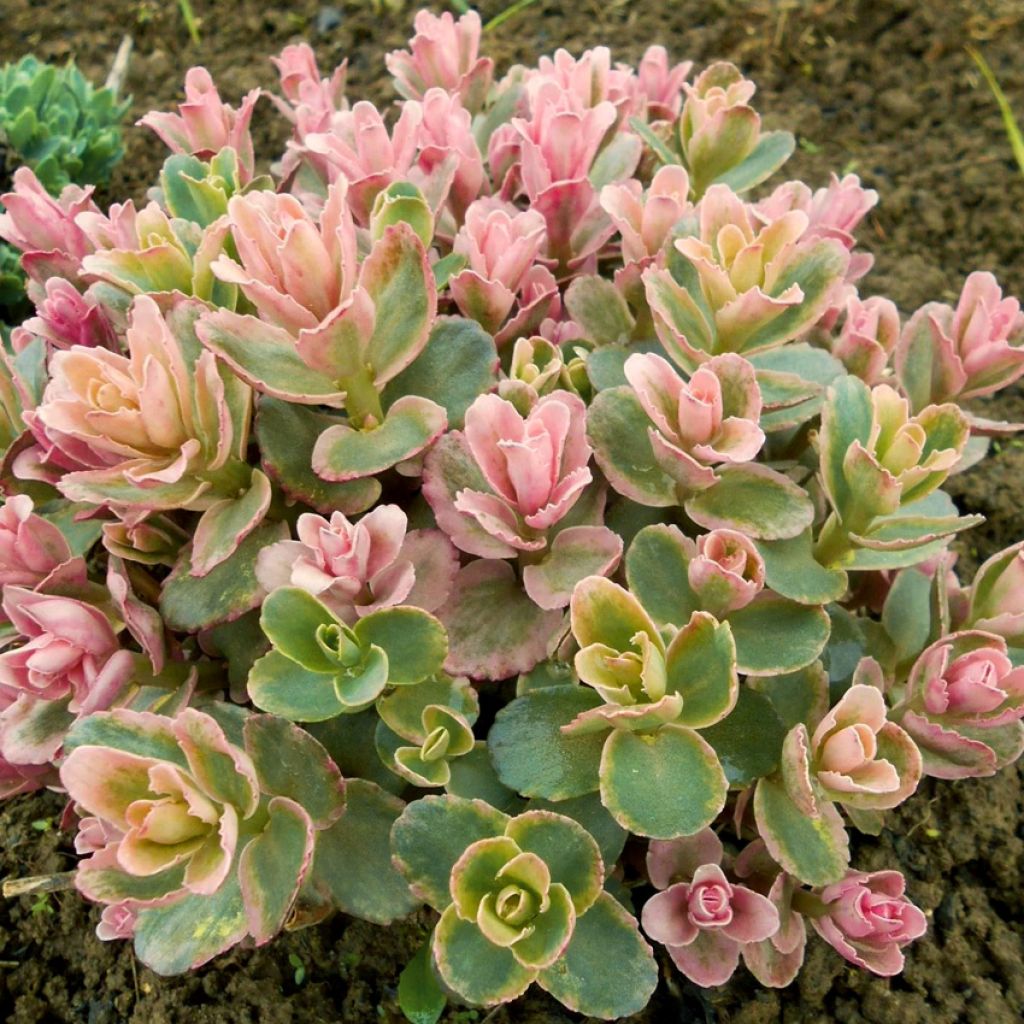

Sedum Pinky - Autumn Stonecrop
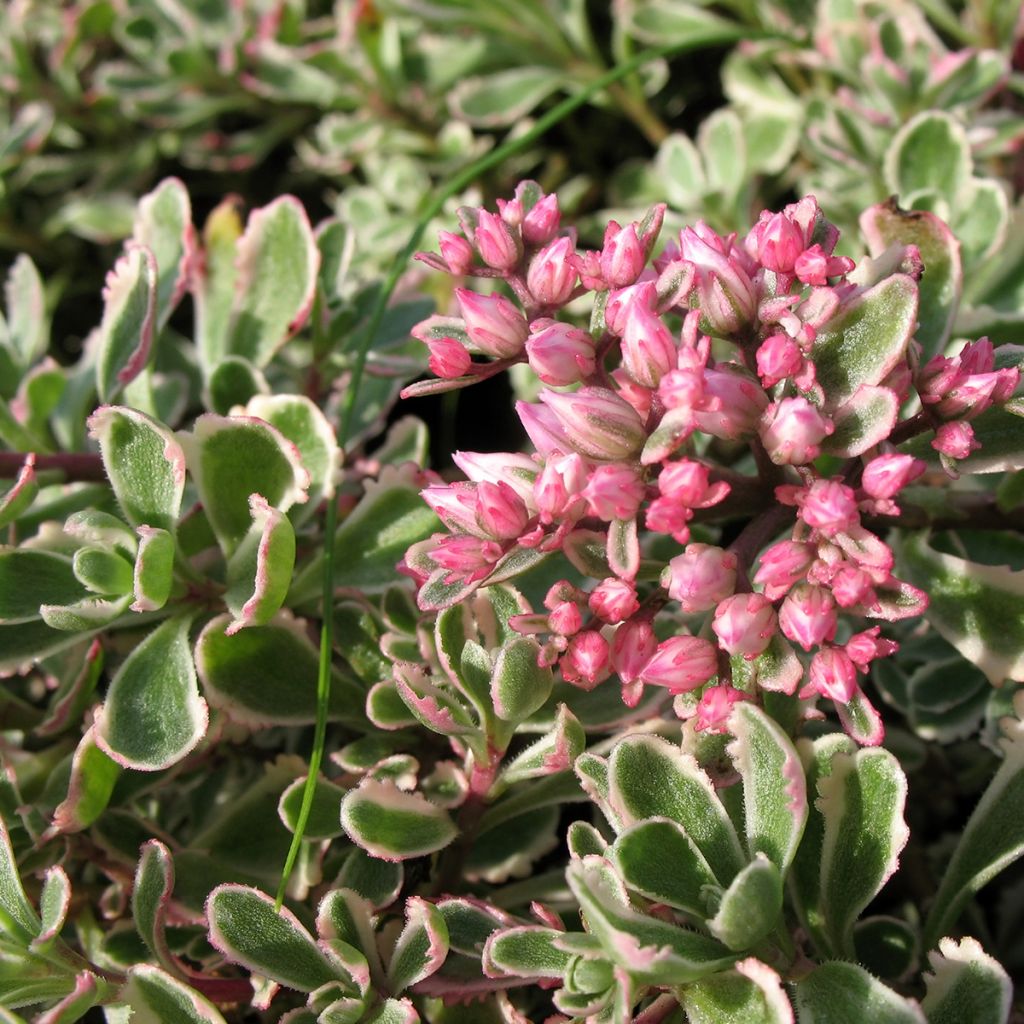

Sedum Pinky - Autumn Stonecrop
Sedum Pinky - Autumn Stonecrop
Sedum x hybrida Pinky
Autumn Stonecrop
This item cannot be shipped to the selected country
Delivery charge from €5.90
Delivery charge from €5.90
More information
Schedule delivery date,
and select date in basket
This plant carries a 12 months recovery warranty
More information
We guarantee the quality of our plants for a full growing cycle, and will replace at our expense any plant that fails to recover under normal climatic and planting conditions.
From €5.90 for pickup delivery and €6.90 for home delivery
Express home delivery from €8.90.
From €5.90 for pickup delivery and €6.90 for home delivery
Express home delivery from €8.90.
Does this plant fit my garden?
Set up your Plantfit profile →
Description
Sedum 'Pinky', also known as Hylotelephium 'Pinky', is a selection of small stonecrop. It is a remarkable spreading perennial ground cover that stands out with its young pink leaves bordered and speckled with cream-white. The plant forms a small, low, spreading and gently multicolored tuft that does not go unnoticed. Its light pink flowering, which can spread from July to September, is a boon for butterflies and various insects. A remarkable plant, easy to grow, perfect for containers or to add colour to a rockery.
Stonecrops are proof that poor soil can also grow beautiful specimens with subtle hues. If your soil is poor, rather dry, stony, or even slightly chalky, you can nevertheless benefit from hardy perennials (they resist temperatures below -15°C (5°F)), which do not require maintenance and promise to liven up the garden with visits from butterflies. These succulents are easy to grow and have flowers and foliage in various shades that can create astonishing displays, whether in beds, containers, or rockeries.
Sedum or Hylotelephium 'Pinky' is an American selection derived from the variety 'Andrew's Pinky'. This hybrid has a spreading habit, 15cm (6in) tall and up to 45 cm (18in) wide. Its stems bear small oval and spatulate leaves, which are somewhat leathery, with gently toothed margins. This deciduous foliage disappears in winter. The young leaves are pink, bordered and speckled with cream. They gradually turn a soft green, creating a beautiful colour combination on the plant. Its summer flowering is charming. Its inflorescences, in small clusters, are made up of multiple star-shaped light pink flowers, highly prized by insects.
This 'Pinky' stonecrop is an asset to bring colour to all corners of the garden. Plant it at the edge of a patio or a gravel border, in a rockery, or in pots that you can move as you wish. It requires little maintenance and is therefore suitable for green roofs. In borders, it forms an elegant foreground that draws the eye to its neighbours or can be placed under shrubs (facing south) to dress poor soils. To accompany it, consider houseleeks, other sedums (Sedum lydium 'Glaucum', Sedum spurium 'Voodoo') to vary the colours, and delospermas.
Report an error about the product description
Flowering
Foliage
Plant habit
Botanical data
Sedum
x hybrida
Pinky
Crassulaceae
Autumn Stonecrop
Hylotelephium Pinky
Cultivar or hybrid
Other Sedum
Planting and care
Sedum 'Pinky' likes warm exposures and very well-drained, even dry soils. You can plant it in spring or autumn in the ground or in a container. Ensure the soil is well-drained. Add gravel, if necessary, to improve drainage. On the other hand, if you place it in a rock garden or on a low wall, give it a little potting soil to help it to take root. Afterwards, it will fend for itself.
Take care of it by making sure it doesn't get covered with dead leaves or vegetation residues, and by possibly removing small wilted inflorescences.
Planting period
Intended location
Care
This item has not been reviewed yet - be the first to leave a review about it.
Summer flowering perennials
Haven't found what you were looking for?
Hardiness is the lowest winter temperature a plant can endure without suffering serious damage or even dying. However, hardiness is affected by location (a sheltered area, such as a patio), protection (winter cover) and soil type (hardiness is improved by well-drained soil).

Photo Sharing Terms & Conditions
In order to encourage gardeners to interact and share their experiences, Promesse de fleurs offers various media enabling content to be uploaded onto its Site - in particular via the ‘Photo sharing’ module.
The User agrees to refrain from:
- Posting any content that is illegal, prejudicial, insulting, racist, inciteful to hatred, revisionist, contrary to public decency, that infringes on privacy or on the privacy rights of third parties, in particular the publicity rights of persons and goods, intellectual property rights, or the right to privacy.
- Submitting content on behalf of a third party;
- Impersonate the identity of a third party and/or publish any personal information about a third party;
In general, the User undertakes to refrain from any unethical behaviour.
All Content (in particular text, comments, files, images, photos, videos, creative works, etc.), which may be subject to property or intellectual property rights, image or other private rights, shall remain the property of the User, subject to the limited rights granted by the terms of the licence granted by Promesse de fleurs as stated below. Users are at liberty to publish or not to publish such Content on the Site, notably via the ‘Photo Sharing’ facility, and accept that this Content shall be made public and freely accessible, notably on the Internet.
Users further acknowledge, undertake to have ,and guarantee that they hold all necessary rights and permissions to publish such material on the Site, in particular with regard to the legislation in force pertaining to any privacy, property, intellectual property, image, or contractual rights, or rights of any other nature. By publishing such Content on the Site, Users acknowledge accepting full liability as publishers of the Content within the meaning of the law, and grant Promesse de fleurs, free of charge, an inclusive, worldwide licence for the said Content for the entire duration of its publication, including all reproduction, representation, up/downloading, displaying, performing, transmission, and storage rights.
Users also grant permission for their name to be linked to the Content and accept that this link may not always be made available.
By engaging in posting material, Users consent to their Content becoming automatically accessible on the Internet, in particular on other sites and/or blogs and/or web pages of the Promesse de fleurs site, including in particular social pages and the Promesse de fleurs catalogue.
Users may secure the removal of entrusted content free of charge by issuing a simple request via our contact form.
The flowering period indicated on our website applies to countries and regions located in USDA zone 8 (France, the United Kingdom, Ireland, the Netherlands, etc.)
It will vary according to where you live:
- In zones 9 to 10 (Italy, Spain, Greece, etc.), flowering will occur about 2 to 4 weeks earlier.
- In zones 6 to 7 (Germany, Poland, Slovenia, and lower mountainous regions), flowering will be delayed by 2 to 3 weeks.
- In zone 5 (Central Europe, Scandinavia), blooming will be delayed by 3 to 5 weeks.
In temperate climates, pruning of spring-flowering shrubs (forsythia, spireas, etc.) should be done just after flowering.
Pruning of summer-flowering shrubs (Indian Lilac, Perovskia, etc.) can be done in winter or spring.
In cold regions as well as with frost-sensitive plants, avoid pruning too early when severe frosts may still occur.
The planting period indicated on our website applies to countries and regions located in USDA zone 8 (France, United Kingdom, Ireland, Netherlands).
It will vary according to where you live:
- In Mediterranean zones (Marseille, Madrid, Milan, etc.), autumn and winter are the best planting periods.
- In continental zones (Strasbourg, Munich, Vienna, etc.), delay planting by 2 to 3 weeks in spring and bring it forward by 2 to 4 weeks in autumn.
- In mountainous regions (the Alps, Pyrenees, Carpathians, etc.), it is best to plant in late spring (May-June) or late summer (August-September).
The harvesting period indicated on our website applies to countries and regions in USDA zone 8 (France, England, Ireland, the Netherlands).
In colder areas (Scandinavia, Poland, Austria...) fruit and vegetable harvests are likely to be delayed by 3-4 weeks.
In warmer areas (Italy, Spain, Greece, etc.), harvesting will probably take place earlier, depending on weather conditions.
The sowing periods indicated on our website apply to countries and regions within USDA Zone 8 (France, UK, Ireland, Netherlands).
In colder areas (Scandinavia, Poland, Austria...), delay any outdoor sowing by 3-4 weeks, or sow under glass.
In warmer climes (Italy, Spain, Greece, etc.), bring outdoor sowing forward by a few weeks.

































